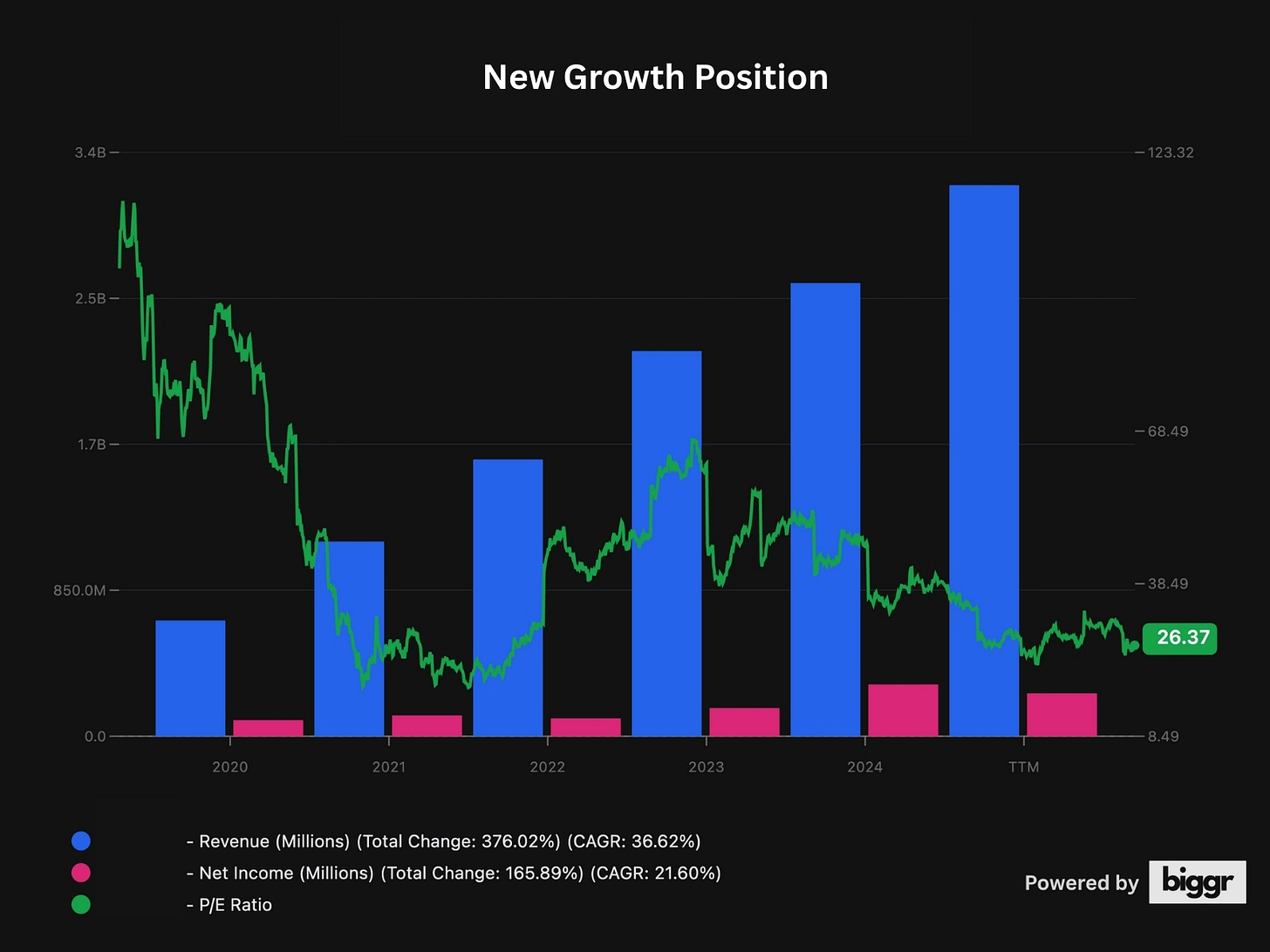Buying A New Growth Stock With 3x Potential
Industry leader growing revenues +30% annually. It benefits from strong network effects and economies of scale. Yet, it's trading at just 13 times forward earnings.
I have said this many times, and I’ll say it again here—the most critical skill to succeed in investing is pattern recognition.
This should be intuitive to everybody.
Successful companies tend to have some similar characteristics; companies that successfully complete their high-growth era and come to dominate their niches have some common properties; failing companies provide similar signals etc…
These properties and signals are available to trained eyes, while the uninitiated tend to see them all similarly.
The problem is that you can’t train yourself to see through all types. It requires time and commitment.
Thus, when we perform well, I tend to look at the past and understand what we did right and where our edge came from.
In the last two years, our portfolio delivered a phenomenal performance. We closed the last year with a 50% return, and we are currently up over 68% within the last twelve months.
When I look back, I see that this performance came predominantly from our growth stock picks.
Many of these stocks weren’t liked by the market two years ago, yet acknowledged them, bought them, and patiently waited. Result? They have been driving our performance since the beginning of this year.
So, what are our criteria for picking such stocks? What is the pattern we like?
There are three:
1) It should solve a pressing problem.
All these businesses were painkillers, not vitamins. They solved a pressing problem for their users, and thus, they grew fast organically once they gained the initial traction.
2) They should benefit from some network effects.
Network effects are perhaps the most defensible type of competitive advantage in a world where most technologies are getting commoditized.
Once a network reaches a critical mass, or the so-called “tipping point”, it’s extremely hard for it to collapse.
Because the “tipping point describes” a particular network size beyond which it’s more advantageous for any potential new user to join the incumbent rather than the competitor. Why would anybody join a new social media platform where they won’t find any friends, instead of Instagram, where most of their friends already are?
This doesn’t just serve as a growth engine, but also shrinks the contestable market for competitors; after all, any community can only sustain a limited network size.
3) They should be win-win businesses.
What does this mean?
Selling its product shouldn’t be to the detriment of any stakeholder. This is why Warren Buffett refused to acquire tobacco companies while they were printing cash and selling for single-digit multiples back in the 1980s. Their product is inherently harmful to their users. It’s a win-lose product.
We have been very skillful in spotting such patterns and buying those stocks at attractive prices.
Thus, I always look for such patterns, and I think I have found another one.
I recently used its product to solve my own problem and was satisfied with the service. I Googled the company with an investor reflex to see whether it was publicly traded.
It was.
I dug deeper and got very impressed with what I saw:
It operates a giant network, and it’s the market leader in its industry.
It solves a common problem for millions of people every day.
It provides significant cost savings to its customers.
Grew revenues 36% annually since 2020.
Has a 22% return on invested capital.
What’s even better?
It’s trading near its lowest valuation at just 13 times forward earnings despite +20% expected growth for years!
So, let’s cut the introduction here and dive deep into this hidden gem.
🏭 Understanding the Business
I have never regretted investing in a particular type of business.
A business whose product I used to solve my own problem, and I got pretty satisfied with the product.
This is one of them.



